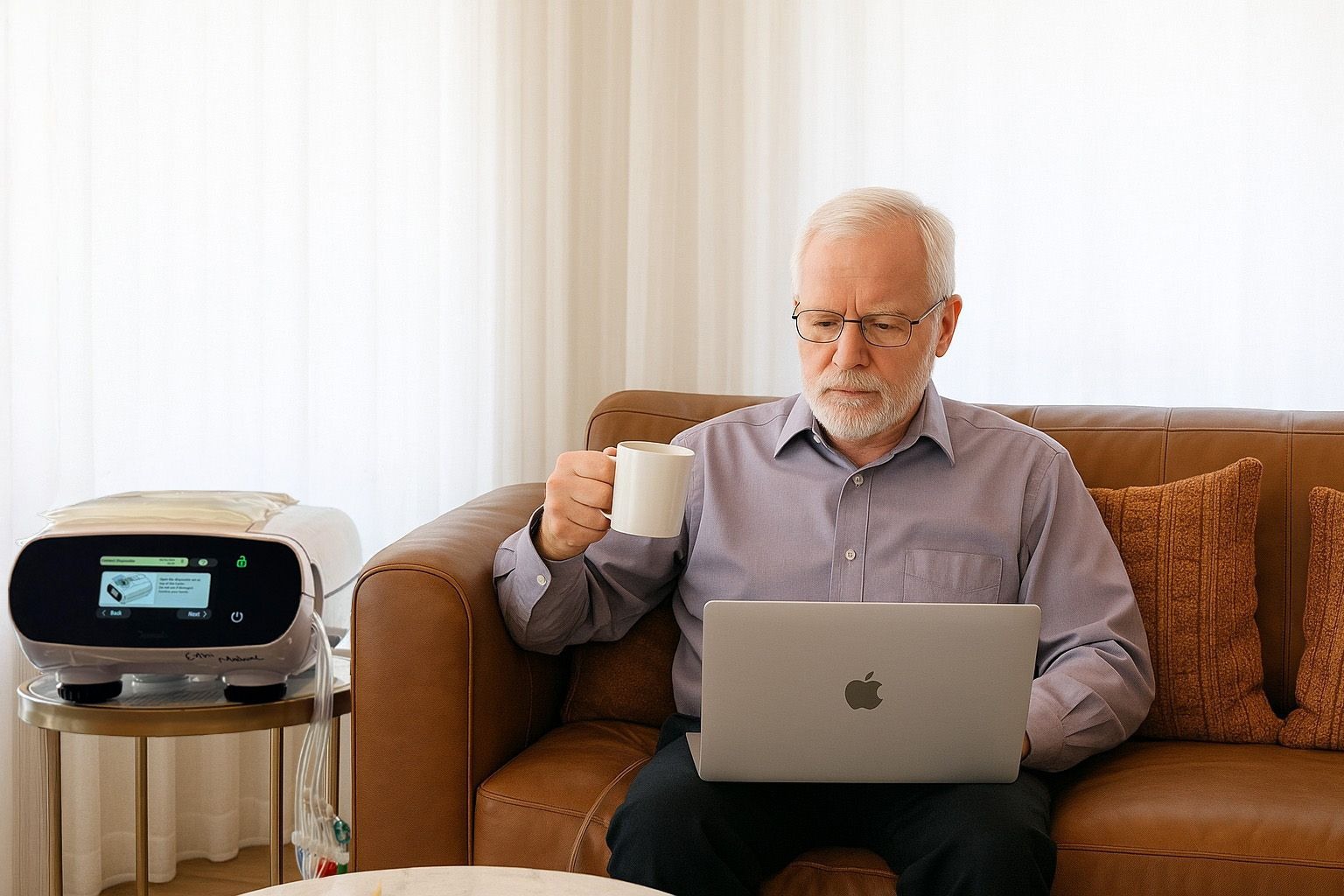Dialysis at Home
Byonyks has received FDA 510(k) Clearance for its X-1 Automated Peritoneal Dialysis Cycler.
Byonyks has received FDA 510(k) clearance for its X-1 Automated Peritoneal Dialysis (APD) Cycler, becoming one of only a few companies with this distinction.
In the official press release, our leadership shares what this clearance means for the future of home-based dialysis, why it matters in today’s healthcare landscape, and how it reflects Byonyks’ continued commitment to patient-focused innovation.
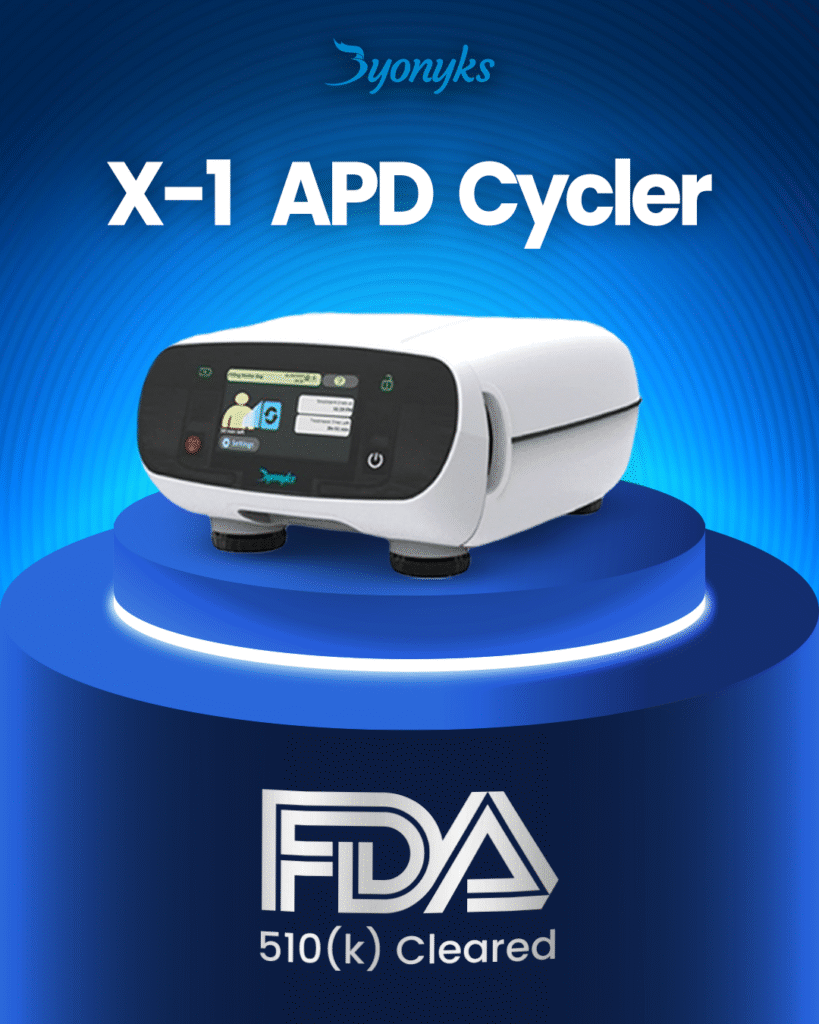
Byonyks Medical Devices is reinventing the way dialysis therapy is achieved by developing new platforms that will disrupt the current standard of dialysis in the US. Our next-generation devices for home-based peritoneal dialysis (PD) aim to elevate the existing PD treatments and revive innovation after decades of stagnation and apathy in the industry. This will allow patients with kidney disease the opportunity to control their lives and their health. The US government has decided to move 80% of its dialysis patients to home treatment or a transplant. This will be the biggest paradigm shift in the last 40 years in this $44 billion industry.

The Byonyks mission
“To improve and extend the lives of persons with kidney failure by creating new home peritoneal dialysis devices that deliver higher quality treatments more efficiently.”
Byonyks mission is to revolutionize the way dialysis therapy is performed in the treatment of kidney failure. We
are reinventing dialysis that will save lives in the U.S. and beyond. It is a $120 Billion industry using a 40-year-old technology.

Improved patient outcome

US Govt. pushing towards 80% home dialysis
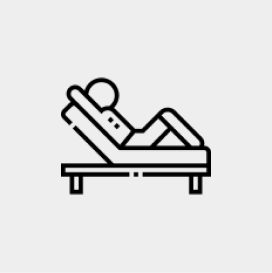
Enhanced patient’s comfort

Disrupting a 40 year old technology
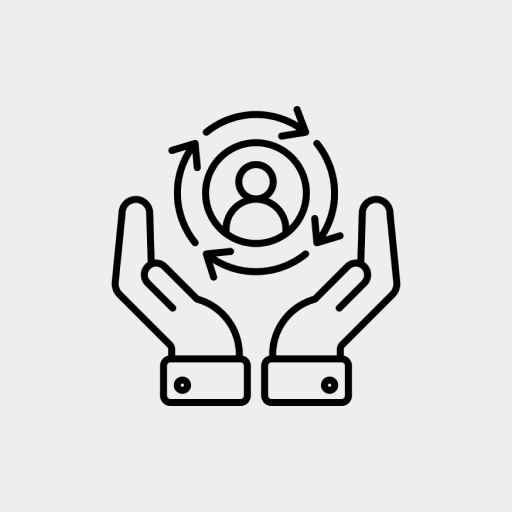
Pivotal to achieving value base care goals
Byonyks' next generation peritoneal technology will:
Preserve peritoneal membrane integrity
Biocompatible, toxin-free peritoneal dialysate better preserves peritoneal membrane health, ensuring the maximum duration on PD therapy.
Make dialysis more affordable
Cost-effective consumables and high-performance devices result in a highly manageable treatment cost.
Preserves residual renal function longer
Byonyks’ next-generation peritoneal technology is designed to help patients maintain their remaining kidney function for a longer period. The BALANZ clinical study supports this benefit, demonstrating a slower decline in residual kidney function among patients on peritoneal dialysis.
Eliminate acid & toxins from the dialysate
Byonyks’ next-gen peritoneal dialysis system will eliminate toxins and pro-inflammatory mediators that result from heat sterilization thereby reducing malnutrition, lowering the rate of atherosclerosis, and reducing the rate of dropouts.

843 Million CKD patients worldwide

Millions of lives lost every year

75% patients have no access to dialysis
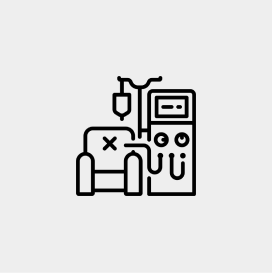
Over 120 countries have no APD machines

$50,000+ is spent every year on a patient in the US
